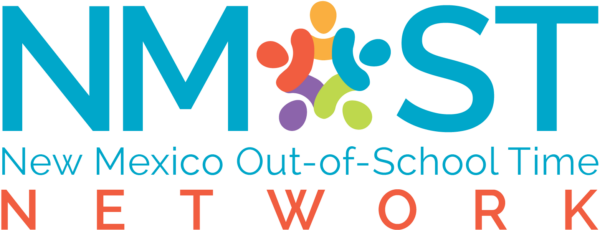The passage of the American Rescue Plan provides historic levels of funding for out-of-school time programming, with $30 billion set aside for afterschool and summer learning. While school closures in New Mexico have resulted in unfinished learning across disciplines, STEM learning has been particularly affected. In a recent survey, 65% of parents with children in online or hybrid school settings don’t believe the STEM offerings for their students meet their standards of quality. Afterschool can provide opportunities for students to explore STEM in new ways, addressing the pandemic inflicted challenges students have experienced.
Out-of-school time programs offer a safe environment to support students’ social and emotional development and an opportunity for young people to see themselves as someone who can succeed in STEM. Project-based learning in afterschool STEM programs provides opportunities for students to work with peers and develop their skills in teamwork and communication. The afterschool environment also provides a low-risk setting for students to explore new STEM subjects and hands-on activities without the pressure of failure presented in the school day, which can help to building resiliency and interest in STEM.
Funding STEM afterschool and summer learning programs will also help to bolster a STEM reliant economy like New Mexico’s. The sudden emergence of the COVID-19 pandemic has dealt a significant blow to state economies, businesses, and working families while accelerating trends that underscore the urgency of strengthening the STEM-literate workforce. Furthermore, the learning loss in STEM for the current cohort of students can have ripple effects that threaten the long-term economic health of communities and our nation as demand for STEM talent accelerates due to the pandemic. Analysis based on previous studies of school closures and the impact on economies conducted by the Organisation for Economic Cooperation and Development suggests that current students might expect lower earnings than current workers and the United States GDP would shrink by 1.5% or $14.2 trillion in economic value without intervention from policymakers.
Afterschool and other informal learning programs offer policymakers a strong solution to this challenge, supporting extended-learning efforts, sustained engagement, and learning recovery and acceleration in the STEM subjects through hands-on, personalized learning. Research shows that hands-on, experiential learning by students is linked to higher levels of interest in STEM and leads to better STEM learning outcomes. Even before the pandemic, schools often provided few opportunities of this kind, especially in schools that serve under-resourced and marginalized communities. The pandemic has significantly deepened existing gaps for students to access hands-on STEM learning opportunities, as well as hindering students’ social emotional development. The wealthiest 20% of families spend almost seven times more on enrichment activities outside school for their children than do the poorest 20%. Afterschool programs are the most effective way of closing this gap and doing so with high-quality engagement in activities that spark a long-term interest in STEM.
For all these reasons, New Mexico should use the millions of dollars provided through the American Rescue Plan to invest in more out-of-school time STEM programs that can give our children and state a better shot at prosperity in an evolving economy.
